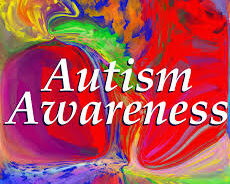Adult Autism and Therapeutic Intervention
a Case Study

Insights into Adult Autism Treatment and Management
I recall a time when I was working in the field of adult disability services as a manager. I was assigned a task of finding ways to manage anger and disruption in a residential home that housed three adult males with diagnosed intellectual disability.
The background provided to me told a story of one resident, we will call him Peter (all names have been changed for privacy). Peter had been diagnosed with Autism by the resident psychiatrist and was undergoing medication and treatment.
Peter, a 26 year old, was constantly disrupting the other two adult people, Phillip and John, by barging into the lounge room in the shared home where Phillip and John watched TV, throwing himself on the floor aggressively, and making very loud, angry noises! Phillip and John would react to this behaviour with angry, abusive retorts and with threats of physical attack. This was frightening to both the staff and the residents of the home.
I moved into the home, assumed the role of carer, and began observing and noting the behaviour. What I observed was behaviour happening exactly as described in the original briefing notes, until one afternoon when something came to my attention that totally turned everything around!
When Peter came barging into the lounge in usual fashion, and threw himself on the floor, I noticed that Phillip and John were watching Rugby League Football on the TV and had just witnessed a great tackle with the crowd cheering. I went to Peter’s room and noticed that his TV, which he always watched in private, was tuned to the same channel and he had been watching the same Rugby League match!
This was a light bulb moment and I now made preparations for the next big tackle! Sure enough, the instant the next big tackle occurred on the lounge room TV, in rushed Peter and threw him self on the floor with a lot of noise and fuss! I jumped to my feet and cheered Peter, “Wow! What a great tackle Peter! That was awesome!” with lots of fuss and excitement!
Phillip and John were stunned by the events they were seeing. Initially they were prepared for the usual angry retorts, but my behaviour had confused them. Then the awareness came to them that Peter was role playing the tackle and they joined in with cheering Peter. This was a great change from aggressive responses to supporting responses! From then on, Phillip and John would wait in anticipation for Peter to rush into the lounge room and demonstrate his ability to tackle every time there was a cheering tackle on the TV and Peter never let them down!
The moods, attitudes and overall behaviour changed dramatically in that household as a result of this revelation. So what did I learn about managing and treating people with Autism? I learned that I am most effective when I allow my mind to be open to new and exciting alternatives and possibilities. I learned that my primary perspective of what I observe to be happening may not always be correct. I learned to step back, take a breath, and ask myself, “How would love see this?” and “How might love respond?”
Rule No.1 “There is only Love
Rule No. 2 “If there is not Love… see Rule No.1.
Teaming this awareness with some Cognitive Behaviour Therapy, Mindfulness Therapy, and some effective Life Coaching can create amazing possibilities, helping to increase cooperation between household members, care teams, and medical teams. A person experiencing Autism, although undergoing medication and treatment, will not see the world from the same perspective as you or I, and can not be expected to do so. Keep your mind open to possibilities and allow yourself to perceive from outside the square.
